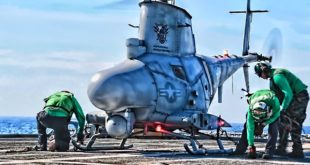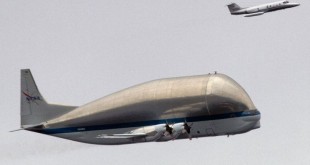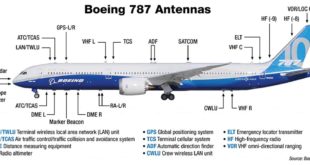The helicopter is a type of aircraft which is lifted and propelled by one or more sets of horizontally revolving overhead rotors. It has two rotors that spin several blades. A blade is a tilted airfoil, just like an airplane wing. As it speeds through the air, each blade generates …
Read More »Hypersonic Aircraft race for commercial and military
Hypersonic refers to aircraft, missiles, rockets, and spacecraft that can reach atmospheric speeds in excess of Mach 5, which is almost 4,000 miles per hour or 6,125 kilometers per hour or more. Hypersonic flight is flight through the atmosphere below about 90 km at speeds greater than Mach 5, a …
Read More »Aircrafts and Rockets for global military logistics, space travel, asteroids and moon mining
Multiple countries are developing the ability to mine in space, specifically on the moon and on asteroids. The moon stands out as a nearby example of what will soon be the site of regular operations. The moon is home to hundreds of billions of dollars-worth of natural resources, including helium-3, …
Read More »China J-20 stealth fighter’s combat missions in the South China Sea, advancing China’s A2/AD strategy
China’s progress toward military superpower status continues to accelerate. According to the latest one, the People’s Liberation Army Air Force (PLAAF) now ranks as the third-largest air force in the world with 2,250 combat aircraft. The People’s Liberation Army Navy (PLAN) is the world’s largest, with 355 ships and submarines. …
Read More »The Evolution of Fly-By-Wire Systems: Technologies, Challenges, and Safety Enhancements
Introduction Fly-by-wire (FBW) technology has revolutionized modern aviation by replacing traditional mechanical and hydraulic control systems with digital flight control computers (DFCCs). Unlike conventional systems, which rely on direct mechanical linkages or hydraulic actuators between the pilot’s controls and the aircraft’s control surfaces, FBW systems use electronic signals to relay …
Read More »Growing Cyber threats to commercial aviation require cyber risk management, and resilient systems
Cyber attacks are growing in number and sophistication affecting large corporations, critical infrastructures of all kinds, governments to SMEs, and increasingly the aviation industry. Commercial aviation plays a central role in our daily lives and is an essential part of the national economy. The number of passengers rose from …
Read More »North Korea perfecting ICBM capable to deliver a nuclear weapon anywhere in the United States, driving US to enhance its Ground-Based Midcourse Missile Defense (GMD)
Throughout 2017, North Korea tested several missiles demonstrating the rapid advances in its military technology. The Hwasong-12 was thought to be able to reach as far as 4,500km (2,800 miles), putting US military bases on the Pacific island of Guam well within striking distance. Later, the Hwasong-14 demonstrated even …
Read More »Aircraft Antennas Requirements and market growth
Antennas are used for a huge range of applications, from mobile phones and “smart” WiFi-connected appliances to GPS and systems that track aircraft and help pilots land safely. Over the years, several distinct types of antennas have come into common use, with designs, frequencies and operating power levels that depend …
Read More »Aeronautical Ad-hoc Network (AANET)
The future of aviation worldwide is one of significant continuing growth in air travel, air cargo, and private general aviation. In parallel with this growth, a significant increase in the supporting information infrastructure will need to occur. The infrastructure will support two primary functions: aviation operational needs (which includes airline …
Read More »Aviation electronic standards including ARINC, DO 254, DO160 and MIL-STD-704 make flying more reliable, predictable, and safer.
The growing demand for high-efficiency fighter aircraft, commercial airbuses and the ever-evolving Aerospace and Defense requirements are driving the demand for next-gen airborne electronics systems. Air transportation agencies and aviation OEMs across the globe have been striving to build next-generation Airborne electronics systems to make flying more reliable, predictable, and …
Read More » International Defense Security & Technology Your trusted Source for News, Research and Analysis
International Defense Security & Technology Your trusted Source for News, Research and Analysis







